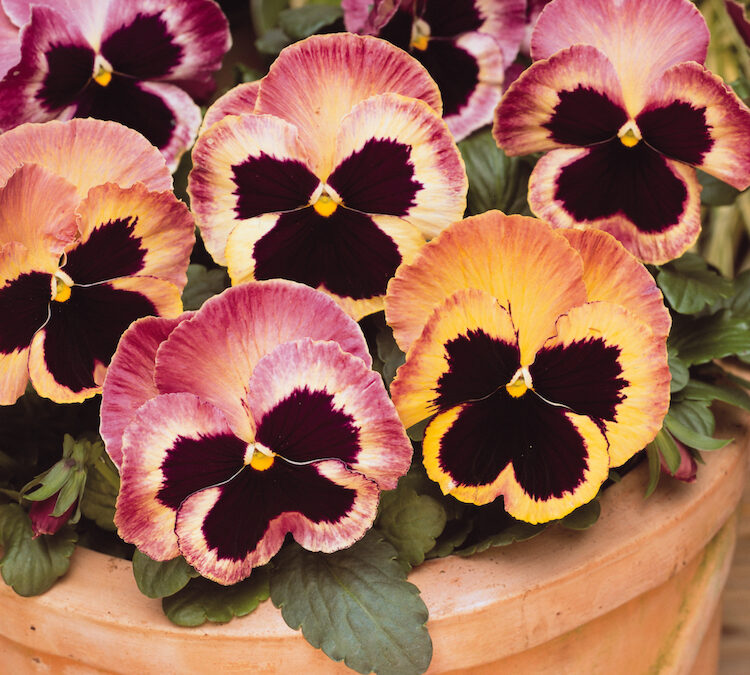It’s spring and pansies come to mind as the plants of the season in the Indiana landscape. Although pansies may be top of mind, there are several other cool-season plants to add to the mix in your containers or landscape.
Plants for the spring season make good companions with spring. bulbs, such as daffodils, hyacinghs and tulips, pots of which can be found in garden centers for use in containers. Spring-season plants can be planted about anywhere in the landscape, too, because trees and shrubs have not leafed out. Fertilizer isn’t usually necessary, but watering when dry is. Here are 8 great spring plants for the Indiana landscape.
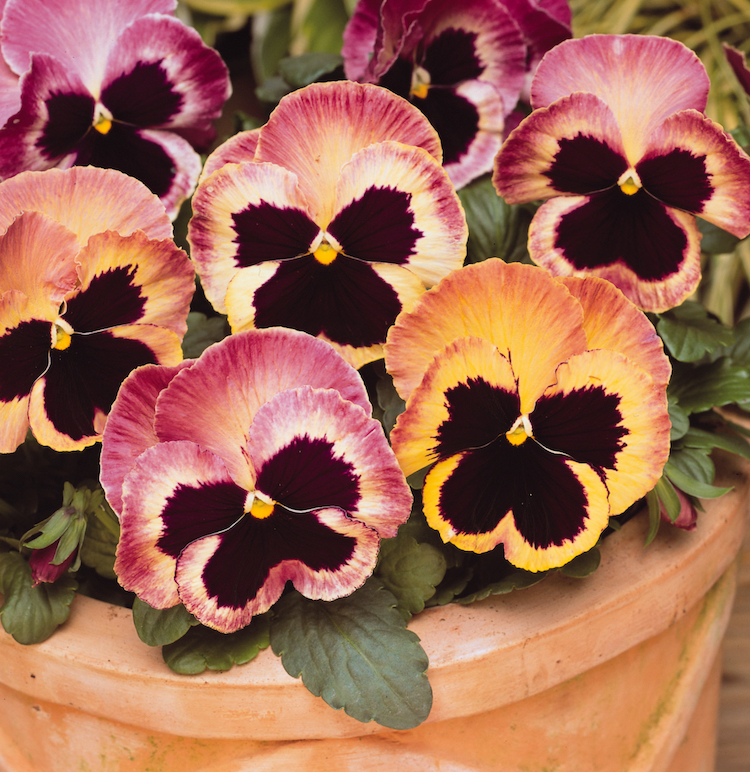
Matrix Sunrise flowers are colorful, large and fragrant. Photo courtesy BallHort.com
Pansies (Viola x wittrockiana)
Let’s start with the reliable pansy. Technically a short-lived biennial or perennial, pansies are tough plants that can take the cold. Grown in Indiana as annuals, they come in just about any color, including solids, blotches and splashes. Their large, fragrant, face-like flowers are showy in pots or in the landscape as companion with spring bulbs.
Besides watering when dry, especially in containers, deadheading (removing spent flowers) will keep pansies blooming. Deadheading also tidies up the plants.
Johnny jump-ups and tufted violet (Viola tricolor, V. cornuta)
Also called violas, these cheery plants bloom and bloom and bloom. Deadheading isn’t really necessary for these relatives of pansy. The flowers and plants are smaller than pansies, but they have the same characteristic colors, whiskers and all.
These fragrant beauties may self-sow and ‘jump up’ in unexpected places, but they would never be considered invasive. They are easy to pull out or transplanted as companions to spring bulbs.
Like pansies, violas are edible. They can be added to water to freeze in ice cube trays, mixed in with salads and other foods, or plucked from the plant as a reward for walking the yard.
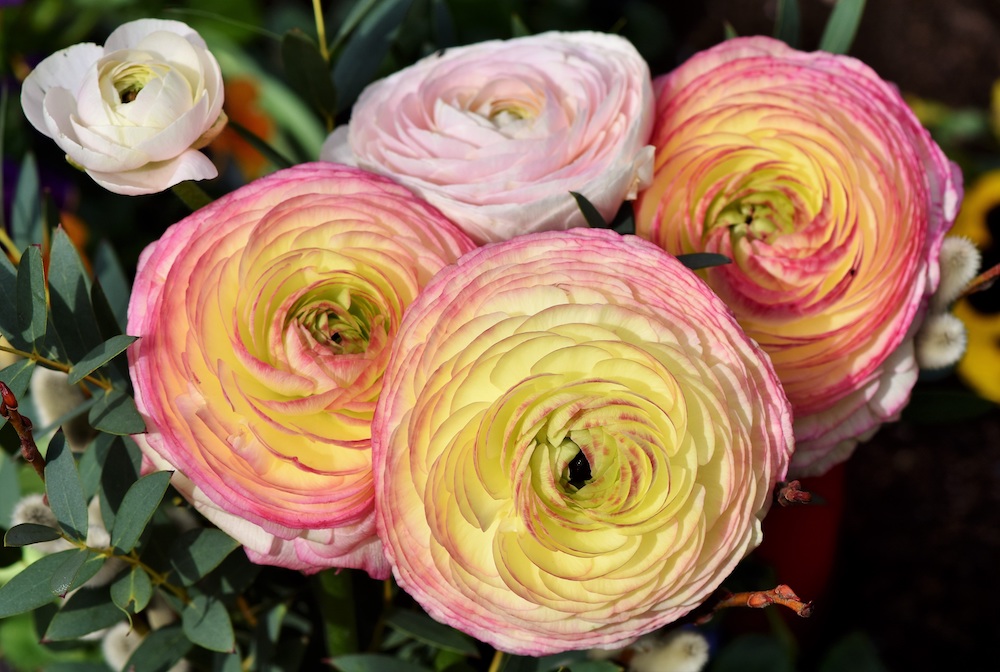
Tissue paper-like layers form the petals of ranunculus. Photo Pixabay.com
Ranunculus
These flowers look like pastel tissue paper. Ranunculus can be double and single flowers. Like stocks, ranunculus is tall and can be used in the centerpiece of pots.
Ranunculus is probably best suited for containers, rather than in-ground planting. For one thing, they are more susceptible to damage by cold temperatures. If the pot isn’t under cover, consider tenting a sheet or paper bag over the ranunculus if freezing temps threaten.
Ranunculus is not winter hardy in the Indiana landscape. Bulbs can be planted indoors or a greenhouse in mid-winter for planting outdoors in spring.
Stocks (Matthiola incana)
Talk about fragrant, stocks are a common ingredient in many perfume recipes. These are tall enough to be the centerpiece in a container or a backdrop to pansies or violas in the landscape.
Because of their wonderful fragrance, plant them in pots where you can enjoy their beauty and scent as you walk to the mailbox, garage or front or back door. These also can be cut for indoor enjoyment.
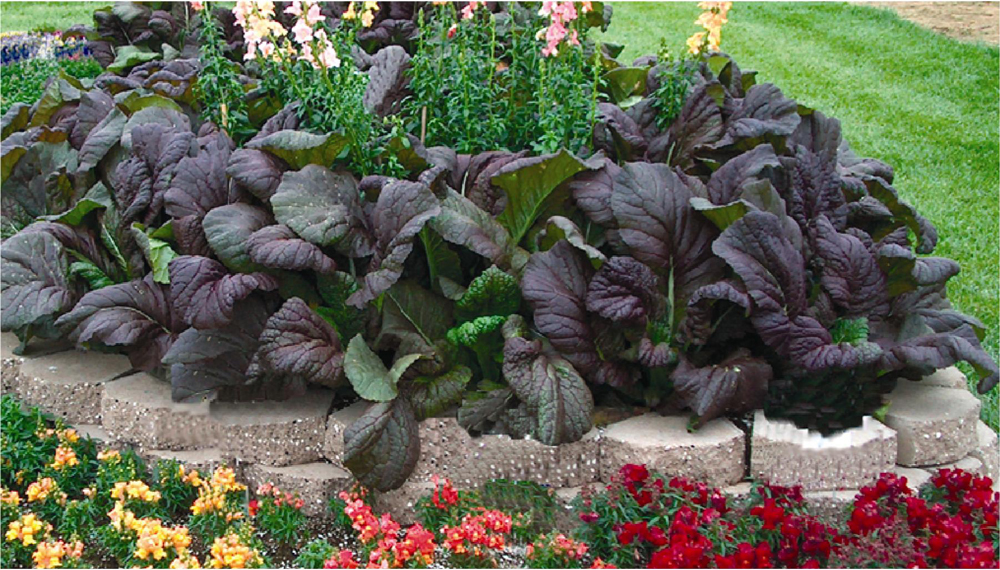
Snapdragons provide the backdrop to edible Red Giant mustard in a garden bed. This combo would work for spring or fall.
Snapdragons (Antirrhinum majus)
Unlike ranunculus, snaps can take it cold before the get damaged. Snaps come in all sizes, from tall beauties favored by florists and cut flower enthusiasts, to 6- to 8- inch plants to tuck in containers to fill space. Snaps also can be planted in the garden, where they’ll survive through summer and into fall. Many snaps are fragrant.
Deadhead snaps to keep them blooming. If in the landscape and the plants start to look a little sad, but them back to 2 or 3 inches from the ground to revive them. Give them a shot of fertilizer and they’ll snap right back. These are best grown in full sun in the summertime.
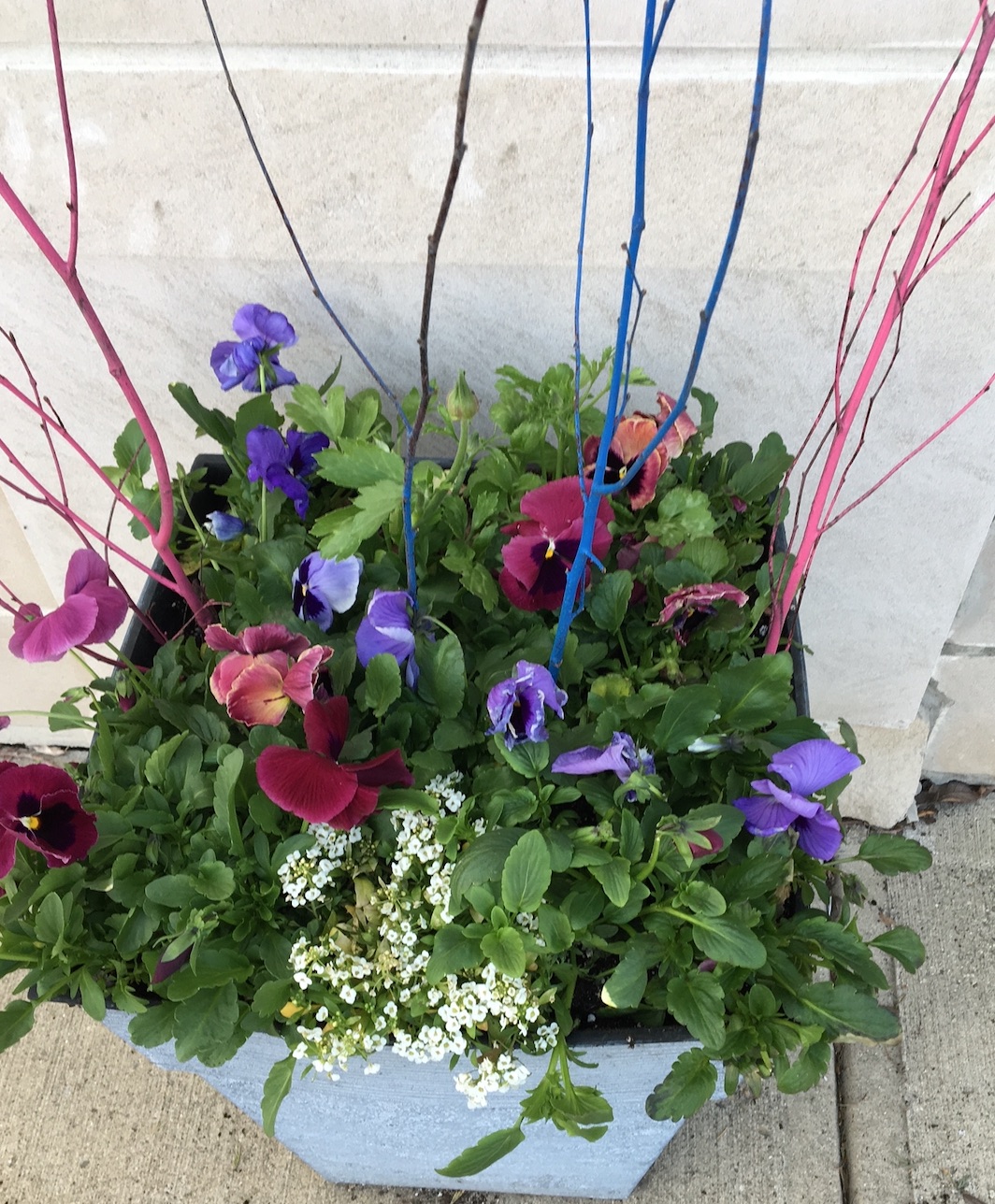
Sweet alyssum adds brightens to a container of maroon and purple-blue pansies. (C) Photo Jo Ellen Meyers Sharp
Sweet alyssum (Lobularia maritima)
For more sweet fragrance plant sweet alyssum in containers or in the landscape. This low-growing plant comes in white and various shades of pink or pale purple.
Sweet alyssum has a loose, cascading habit, so place it to gracefully camouflage a container’s rim. In the landscape, plant about 6 inches apart so the alyssums form a neat border.
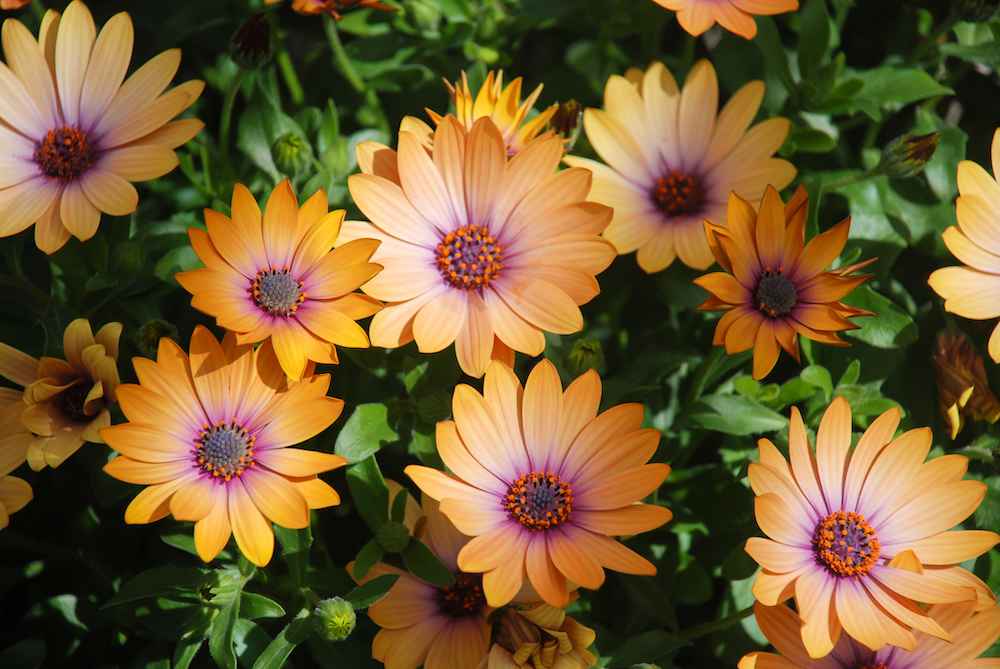
Orange osteospermum or dimorphotheca flowers in the flowerbed, orange flowers.
African daisies (Osterspurmum hybrida)
Also known by their scientific name Osterspermum, these plants are at their best in the cool temperatures of spring and fall. African daisies come in lots of colors, including bicolor flowers.
Plants are about 12 to 15 inches tall when blooming. The leaves tend to stay low, allowing the flower stalk to claim center stage. They flowers are good for cutting for indoor enjoyment.
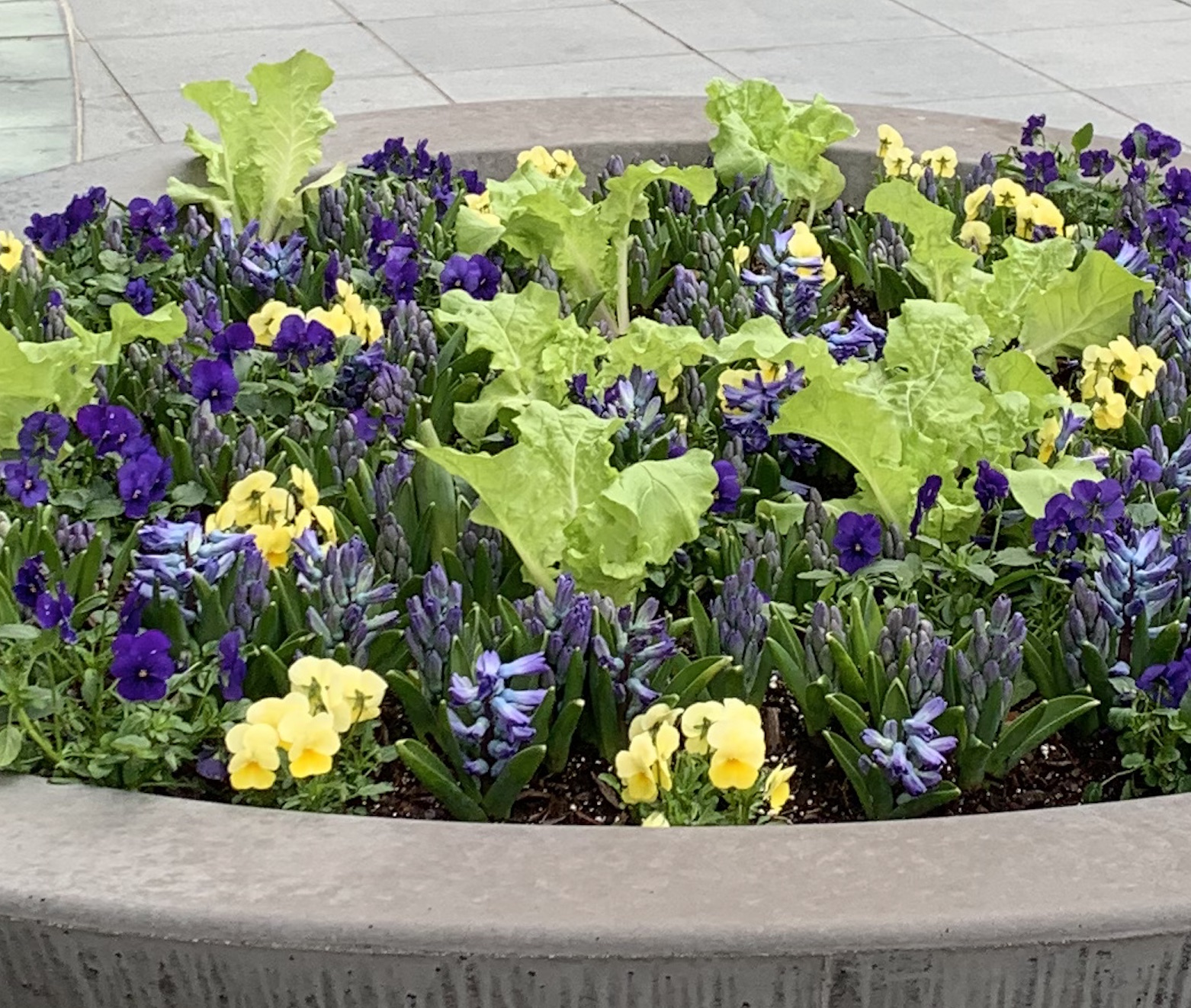
Here, Chinese cabbage and yellow violas compliment the blue-purple hyacinths. (C) Photo courtesy Irvin Etienne
Edible spring plants
Lettuces, kales, chards, cabbages, and mustards are some of the edible, ornamental plants that are as at home in your landscape or containers as they on your plate. These same plants also can be used in fall, where their flavor is enhanced by frosty temperatures.
Chards tend to make it through summer in containers as edible, ornamental plants, while the others likely will go to seed when warm temperatures hit.
All of these plants are readily available at garden centers. Look for the edible plants in the vegetable section.
If you’re considering a landscape project to enhance the spring season and beyond, please contact a Holeman landscape pro.

